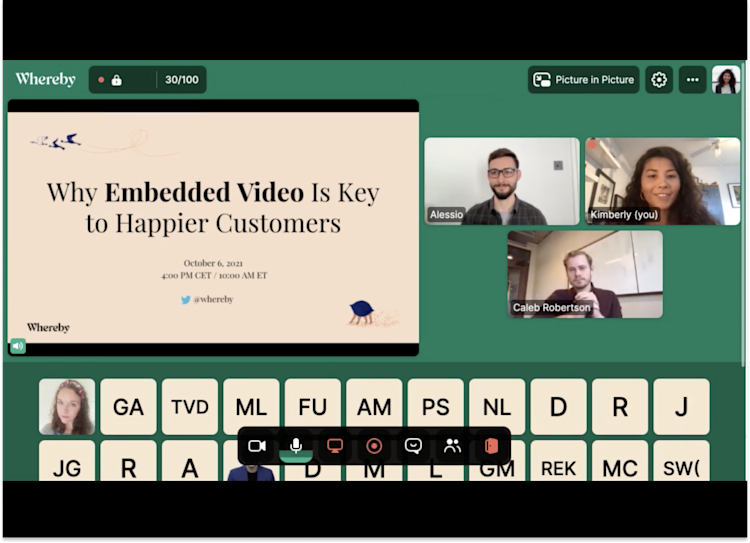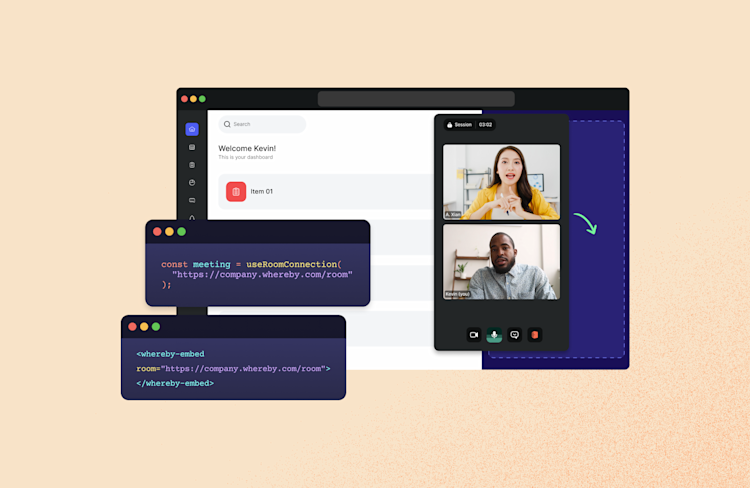How to Build Better Customer Engagement with Video in 2025
Meet your customers where they are with a strong, video-based customer engagement strategy. Here’s how.
For many offices around the world, the great “back to office” debate landed in a compromise: a hybrid model that allows more flexibility and remote work opportunities, while encouraging (or in some cases, mandating) a certain number of days per week in person.

Even if your company has embraced a hybrid or back-to-office model, your customers may not. The vast majority of workers prefer to work remotely, citing benefits like additional flexibility and spending more time with family.

...but that doesn’t always line up with what employers plan to do. In the U.S., just under half of companies (45%) told CNBC they would pursue this kind of model. The traditional way of doing business – for sales, partnerships, or account management – won’t work anymore. In a hybrid world, there isn’t necessarily an office for you to see your customers face-to-face. So how can you make sure you’re building strong, valuable relationships from afar?
Customer engagement matters more than ever
Successful companies aren’t built on products, they’re built on relationships.
The way you engage with your customers, especially in a hybrid work environment, matters more than ever. According to HubSpot, customer engagement is “the process of interacting with customers through a variety of channels in order to strengthen your relationship. For many businesses, this process begins with the first interaction and extends beyond the point of purchase.”
In a hybrid world, that won’t always look like face-to-face fancy dinners or after-conference parties. Online touchpoints through social media, email, website, chatbots, or through your online community can still add value and make every interaction feel personal.
75% of executives surveyed by the Wall Street Journal said they would invest more in creating hybrid experiences over the next 12 months, with the goals of improving personalization (43%), customer connection (40%), and inclusive experiences (38%).
The companies winning today — think Amazon, Starbucks, and Netflix — are the ones most obsessed with their customers. If you want to acquire (and keep) your customers, you need to do the same. Here’s how:
1. Put the customer first (really)
90% of respondents say that customer service is important to their choice of and loyalty to a brand. Customer-centricity is no longer a nice-to-have, but an essential part of your sales, marketing, and support strategies. This means understanding your customers in a deeper, more meaningful way – who are they? What do they do outside of work? Are they working remotely? How do they prefer to hear from you?
You want to meet your customers where they are as much as possible. A customer-centric approach means evaluating every process to make sure it’s easy for them, even if you have to go the extra mile to make it happen.
2. Map out every customer touchpoint
Part of understanding your customer is mapping out how often you talk to your customers before and after you close a deal. Many organizations track metrics like follower count, open rate for emails, and conversion rate on their website, but they fail to connect the dots and see the bigger picture: how someone moves from “I have a problem,” to “You’re just the company to solve it.”
Take a step back and map out every potential customer touchpoint, like:
Following your brand on social media channels
Attending a webinar, virtual event, or in-person conference
Signing up for your email list or SMS
Joining your online community
Emailing your customer support or sales team with a question
Filling out a form or chatting on your website
Viewing your pricing page or FAQs
Attending training or onboarding
Mapping this entire journey out from start to finish will help you see the gaps, and how to fix them. For example, if most of your prospects drop off during the checkout process, take a hard look at why that might be. Perhaps you’re not offering a payment option that works better for them, like Apple Pay or PayPal. Or if you’re noticing a big gap between the people who attend your webinars and the people who actually buy your products, you may want to think about changing up your messaging.
3. Create a regular feedback loop
When in doubt, your customers have the answer.
The way we work has completely changed over the last few years, and so the way you market and sell will have to as well. Part of customer-centricity is plugging into regular customer feedback. This can be done through surveys, adding talking points on sales calls, creating a customer council or roundtable, or conducting 1:1 interviews and then making accurate notes with the help of an audio to text converter for future reference. Either way, make sure you’re checking in with them on a quarterly basis so you’re always putting them first, but not bombarding them with interview requests all the time.
4. Add a personal element
If you want to foster customer engagement, you need to meet them halfway. Adding personalization goes way beyond using their first name in an email – you have to make every interaction feel like it’s unique, even if you’re doing it at scale.
In a hybrid model, this can look like sending a small gift or company swag, including a personalized video in an email, or using language that resonates with your customers on a human level, like this viral example from messaging company Slack:

5. Use video calls to build connections
The best way to mimic the magic that in-person interactions have? Do more with video. Video meetings give you the ability to build connections that might otherwise be lost online. With Whereby Embedded as part of your customer engagement strategy, you can:
Increase accessibility for your team: Rather than make a customer wait to talk to your team, they can speak with you right away. No downloads, no tech issues – it’s all right there.
Build a stronger customer feedback loop: With proprietary data on your video calls, you can easily analyze and improve your operations.
Improved customer experience: Simple, streamlined video, embedded into your product, website, or app, sets the right tone that you’re easy to work with and can get the job done.
Consistent branding: Customizable branding for our video platform means the entire interaction feels and looks the same, adding a level of professionalism.
Better interactions: Since video conversations display audiovisual cues, studies show that they’re far more engaging and lead to richer interactions when compared with other methods.
Whereby Embedded is the easiest way to add video calling to your website or platform. Get up and running in minutes, not months, so your team can focus on what matters – your customers.


